How’s your lawn looking? Do you walk through it and wish you knew how to make your Lawn thicker and fuller? Do you look at it and dream of looking at something resembling lush, green grass versus the spotty, less-than-ideal lawn you have now? A beautiful and healthy lawn is often the pride and joy of homeowners. Professional lawn care services not only improve the exterior appearance of a property but also give an area for outdoor recreation and relaxation. In this guide, we’ll go over essential lawn care techniques, best lawn treatments, inventive tips, and some well-kept secrets to help you create a lively and pleasant yard that you can use all year.
Table of Content
What does Lawn Treatment stand for?
Creating a lush and vivid yard is an art form that demands care, precision, and a dash of imagination. Whether you’re a gardening novice or an experienced green thumb, the trek to a beautiful lawn is rewarding and calming. Understanding the importance of a healthy and vibrant lawn motivates you to take the necessary steps to achieve it.
Here’s why a healthy lawn is essential:
- Improve air quality: A well-kept lawn improves your property’s air quality. Grass is a natural air filter, collecting dust particles and absorbing pollutants like CO2 and SO2. With a beautiful lawn, you are actively contributing to a cleaner, healthier environment.
- Prevent Soil erosion: A lush and healthy grass cover also helps to minimize soil erosion. The roots of the grass keep the soil in place, preventing it from being swept away during heavy rain or irrigation. This is especially critical if your property has slopes or uneven ground.
- Inviting Space: A well-maintained lawn provides a secure and comfortable environment for your family to enjoy outside activities. A soft and attractive lawn improves your quality of life by allowing you to host a barbecue, play sports, or simply rest in the sun.
Basics of Grass Types and Soil Health:
Centipedegrass: With its low-growing, dense, and carpet-like appearance, Centipedegrass is another popular choice for lawns in the southern United States. This low-maintenance, warm-season grass requires less water and fertilizer than other turfgrasses, making it an affordable alternative for homeowners looking for a lawn that doesn’t need to be maintained regularly.
Centipedegrass prefers well-drained soil with partial shade. It may not have the same deep green color as other grass varieties, but it does produce lovely seed heads that become brown as they develop.
- Classification: Warm-season grass
- Shade tolerance: Moderate
- Drought tolerance: Low to moderate
- Foot traffic tolerance: Low
- Maintenance needs: Low
- Recommended mowing height: 1.5-2 inches
- Soil pH: 5-6
- Soil type: Acidic, infertile, and well-drained soils
Tall Fescue: Tall Fescue is famous for its versatility and durability. Its extensive root system, which can reach several feet into the earth, lets it obtain hydration even during dry spells, contributing to its exceptional drought tolerance.
Tall Fescue’s capacity to grow in various circumstances, including heat and partial shade, makes it an appealing choice for many homeowners. The grass has a coarser texture than Kentucky Bluegrass, but it compensates with solid growth that can endure heavy traffic, making it ideal for family yards, parks, and sports fields. Despite its resilience, Tall Fescue retains a rich green color and thick growth, adding to a lush grass setting.
- Classification: Cool-season grass
- Shade Tolerance: Moderate
- Drought Tolerance: High
- Foot Traffic Tolerance: High (needs to be overseeded if wear occurs)
- Maintenance Needs: Low
- Recommended mowing height: 1.5-2 inches
- Mowing Height: 2 inches
- Color/Texture: Dark green; coarse texture
Bermuda Grass: Bermuda Grass is a warm-season grass that thrives in southern climates with long, hot summers. It is well-known for its aggressive growth habits, facilitated by rhizomes and stolons, allowing it to spread swiftly and rebound from wear and tear. This makes it ideal for athletic grounds, golf courses, and active family lawns.
Bermuda Grass demands full sun and does not thrive in shaded regions. While drought tolerant, it grows best when watered and fertilized regularly throughout the growing season. Bermuda Grass can lay dormant and turn brown throughout the winter in cooler climates, but it will rebound with rapid growth as temperatures increase.
- Classification: Warm-season grass
- Shade Tolerance: Low
- Drought Tolerance: High
- Foot Traffic Tolerance: High
- Maintenance Needs: High
- Mowing Height: 1 to 1 ½ inches
- Color/Texture: Light to dark green; fine to medium texture
St. Augustine Grass: Known for its thick, lush, and coarse texture, St. Augustine Grass is another warm-season turfgrass popular among homeowners in Atlanta. This grass species thrives in hot, humid settings and is ideal for coastal areas due to its resilience to salt spray. It requires frequent watering, fertilizer, and mowing.
- Classification: Warm-season grass
- Shade tolerance: Moderate
- Drought tolerance: Moderate
- Foot traffic tolerance: Moderate
- Maintenance needs: Moderate to high
- Recommended mowing height: 2.5-4 inches
- Soil pH: 6-7.5
- Soil type: Well-drained, sandy soils
Best Lawn Treatment for Healthy, Vibrant Grass:
In Atlanta’s climate, maintaining healthy, vibrant grass necessitates correct maintenance and targeted treatments. Here are some of the most effective lawn treatments recommended:
- Regular Mowing: Mowing at the proper height avoids stress on the grass. Warm-season grasses found in Atlanta, such as Bermuda and Zoysia, thrive when kept 1.5 to 2 inches tall.
- Adequate irrigation: Deep, infrequent irrigation promotes profound root growth, making the grass more drought and heat-tolerant. Watering in the early morning lowers evaporation and fungal growth.
- Fertilization: Southern lawns in Atlanta benefit from fertilizers specifically designed for their needs, usually high in nitrogen, phosphorus, and potassium. Follow the recommended treatment rates and timing for your grass type and seasonal needs.
- Weed Control: Pull weeds by hand or with herbicides designated safe for your grass species. Weeds compete with grass for nutrients, water, and sunlight, reducing its growth and beauty.
- Plug Aeration: Aeration involves removing small plugs of soil from the grass to relieve compaction. This gives the soil room to expand and allows air, water, and nutrients to access the root zone better. The plugs are deposited on top of the lawn and will disperse back into your turf in a week or two. This procedure improves root development and overall grass health.
- Overseeding: Your lawn may thin during stressful times. Overseeding with appropriate grass seed fills in bare places, increasing the lawn’s density and durability. It is a common practice to overseed every year with aeration, especially with lawns made up of tall fescue.
- Disease and Pest Control: Regularly monitoring for symptoms of disease, such as brown patches or fungal growth, and pest infestations, such as grubs or armyworms, enables early treatment with targeted fungicides or insecticides to prevent extensive damage.
- Soil Testing: Periodic soil testing assesses nutrient levels, pH balance, and soil composition, allowing you to modify fertilization and soil amendments for maximum grass health and development.
Seasonal Lawn Care Strategies:
Spring Lawn Care Plan:
- Clean up: Begin by removing any debris, fallen leaves, or dead grass that may have accumulated during the winter. Raking or using a dethatching tool can assist aerate the soil and promote new growth.
- Mow High: To avoid cutting grass too short, adjust your mower blades to a higher setting, usually between 2.5 and 4 inches. Mowing high helps to shade the soil, retain moisture, and encourage more profound root growth, resulting in healthier and more resilient grass.
- Apply Fertilizer: A balanced fertilizer application helps grass thrive and provides important nutrients. Choose a fertilizer designed exclusively for St. Augustine grass and adhere to the manufacturer’s application rates and timing instructions.
- Beat Weeds: Spring is the best time to eliminate weeds before they take over your lawn and compete for nutrients. Consider using a pre-emergent pesticide to keep weed seeds from germinating, specifically targeting widespread spring weeds like crabgrass and broadleaf weeds.
- Water Properly: Proper watering is essential for a beautiful lawn in the spring and all year. Water deeply and rarely to promote deep root growth, and avoid watering in the evening to prevent fungal illness. A reasonable rule of thumb is to give your lawn one inch of water every week, whether through rainfall or irrigation. So, what are you waiting for? Hire one of the best Lawn Treatment Companies and get the best law care services today!
Looking for spring lawn treatment or yard cleaning services?
Summer Lawn Care Plan:
- Watering: One of the most critical aspects of lawn care during summer is proper watering. Provides around 1-1.5 inches of water each week, including rainfall. Watering early in the morning reduces evaporation and allows the grass to dry before dark, which helps prevent illnesses. Use a rain gauge or moisture meter to monitor soil moisture levels and alter watering schedules accordingly.
- Mowing: It’s essential to keep your lawn at a proper height during summer, as longer grass can provide shade for the soil, helping to retain moisture. The recommended mowing height for most grass varieties is about 2-3 inches or higher if you want a thick lawn. Also, keep your lawn mower blades sharp, as dull blades will tear the grass instead of cutting it smoothly, leaving it more susceptible to illness.
- Fertilizing: During summer due to more heat your lawn requires a lot of energy to grow and stay healthy. That’s why fertilizing your lawn is very important. As per professionals avoid fertilizing your grass during extreme heat as it can burn your lawn. Instead, fertilize your lawn in early summer or late spring before the heat sets in.
Tip* Always Choose a slow-release fertilizer to avoid the risk of over-fertilization. - Weed Control: To prevent weeds from taking over your lawn, it’s essential to keep it healthy and dense through proper watering, mowing, and fertilizing.
- Pest Control: Like weeds, pests can also be a problem during summer. Keep an eye out for common pests such as grubs and chinch bugs, and treat them promptly to prevent damage to your lawn. Avoid using chemical pesticides as these can harm beneficial insects, such as bees, and can be harmful to the environment. Instead, opt for natural pest control methods or seek professional help.
- Aeration: During summer when the soil can become compacted due to heavy foot traffic and dry weather, Aeration can help. Aeration is the process of poking small holes throughout your lawn to allow air, water, and nutrients to reach the roots more easily.
By following these tips, you can ensure that your lawn stays green and beautiful throughout the summer season.
Fall Lawn Care Plan:
- Rake Away Leaves and Debris: While it may seem tedious, this is an essential step in maintaining the health of your grass. Leaves and debris can smother the grass and block sunlight, preventing it from getting the nutrients it needs to thrive.
- Aerate the Soil: The process of creating small holes in the soil to help improve air, water, and nutrient flow to the grassroots. This process is very important, especially during the fall as it allows for better absorption of water and nutrients, promoting strong root growth and a healthier, thicker lawn.
- Fertilize: Fall is the right season to fertilize your lawn since the cooler temperatures and increased moisture allow the grass to absorb and utilize the nutrients. Look for a fertilizer that is specifically intended for fall application and has a higher potassium concentration to assist in strengthening grassroots.
- Overseed: Fall is the best time to overseed since the soil is still warm, allowing for rapid germination, and lower temperatures keep the seed from drying out. Select a high-quality grass seed appropriate for your climate and spread it evenly around your lawn.
- Mow at the right height: As the temperatures drop, you may believe it’s time to store your lawn mower for the season. However, in the fall, you should continue to mow your grass at a little higher height. Yes, it promotes more profound root growth and protects the grass from potential damage caused by freezing and thawing temperatures.
- Keep Watering: As we know the fall season brings more rainfall, so it’s important to continue watering your lawn if needed. Your lawn still needs about an inch of water weekly to stay healthy.
Tip* To avoid overwatering, adjust your sprinkler system accordingly because it can lead to waterlogged soil and potential lawn diseases.
Want to make your lawn spring-ready? Don’t wait
Winter Lawn Care Plan:
- Prepare Your Lawn: Start by raking up any leaves, debris, and fallen branches from your lawn. This will prevent these items from smothering your lawn and allow better air circulation. You should also mow your lawn one last time but set the blade at its highest level. This will help protect the grass blades from any potential frost damage.
- Aerate Your Lawn: This procedure is very important during winter when the ground may become compacted and prevent these essential elements from reaching the roots. You can use a manual or mechanical aerator to create little holes in your lawn. This not only improves your grass’s health but also helps absorb water and nutrients.
- Mowing: Even if your grass isn’t growing as quickly in the winter, you should still mow it. This will help to preserve its appearance and length. However, adjust the blade height to avoid cutting the grass too short, which might damage the roots.
- Fertilize Your Lawn: Fertilizing your lawn in the winter may seem contradictory, but it can help keep it healthy. Use a slow-release, high-nitrogen fertilizer to give the nutrients your lawn requires over the winter. This will allow the grass to thrive and remain vigorous even in the colder months.
- Keep Your Lawn Hydrated: One of the most severe risks to your grass in the winter is dehydration. The heat and wind can still dry out your grass despite the lower temperatures. Continue to water your grass, especially if there has been a shortage of precipitation. However, avoid over watering because it can cause standing water and fungus growth.
Are you looking for lawn care in my area for professional lawn care services? If so, Outdoor Makeover and Living Spaces is here to cater to all your landscape and hardscape needs. So, hurry up; book your consultation today!
Frequently Asked Questions
Many homeowners choose to undertake lawn treatment themselves to save money and have control over the products used. DIY lawn treatment involves fertilizing, weed control, pest control, aeration, and overseeding. However, it requires knowledge of lawn care products, application techniques, and proper timing. This is why you should look for professional lawn cleaning services.
Determining the best lawn treatment company depends on various factors such as location, specific lawn care needs, budget, and customer reviews. Outdoor Makeover and Living Spaces is the best landscape design and build company offering spring cleaning services. Book your appointment today!
Waiting time for mowing after lawn treatment varies based on the treatment type. In general, it’s best to wait at least 24-48 hours before mowing the lawn after applying liquid treatments like herbicides or insecticides to allow the agent to sink into the grass. Granular fertilizers and weed control solutions should be used after the lawn has been well watered and the granules have dissolved or attached to the grass blades, which usually takes 1-2 days.
Mowing the lawn a day or two before applying lawn treatment is advisable. Mowing before treatment ensures that solutions are applied evenly and reach the soil properly. Furthermore, mowing before treatment helps to eliminate debris and allows the treatment to come into direct touch with the grass blades and soil, increasing its efficiency.
The cost of lawn treatment varies based on criteria such as size, type, frequency, and location. Professional lawn care services often cost between $50 and $200 per treatment. However, the cost can vary greatly depending on regional price variances and the exact services included in the treatment package. DIY lawn treatment expenses can be lower, as they are determined mainly by the cost of goods and equipment required for application.

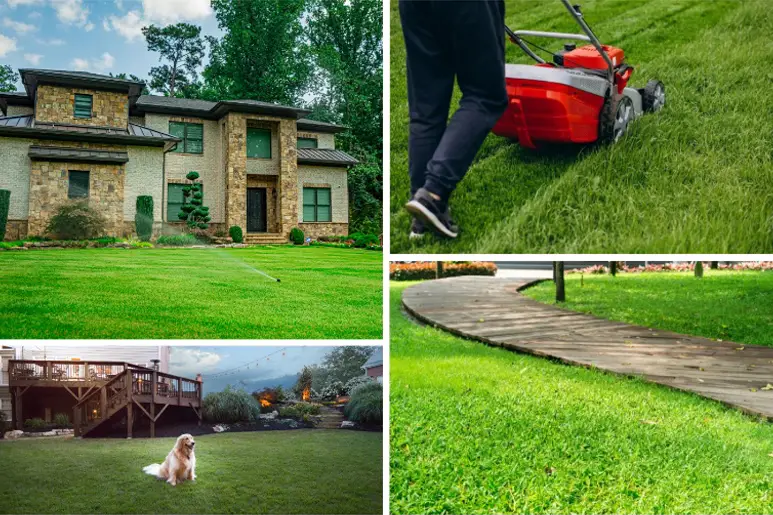
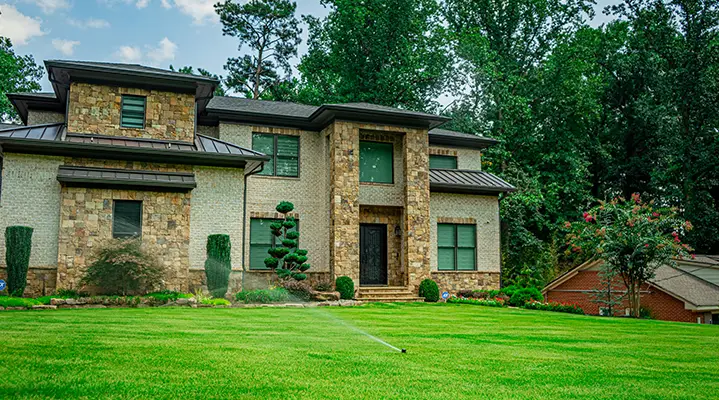
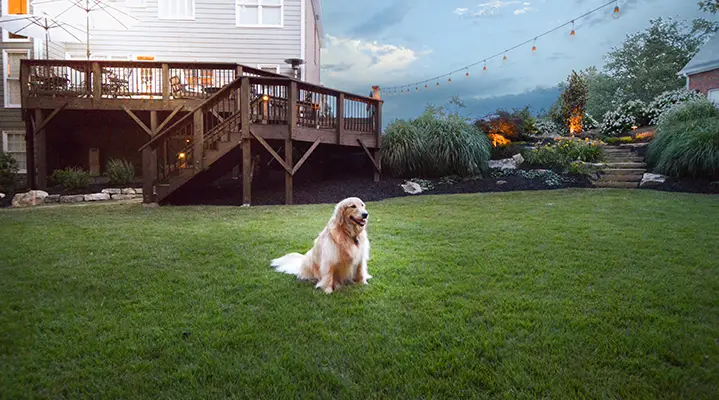

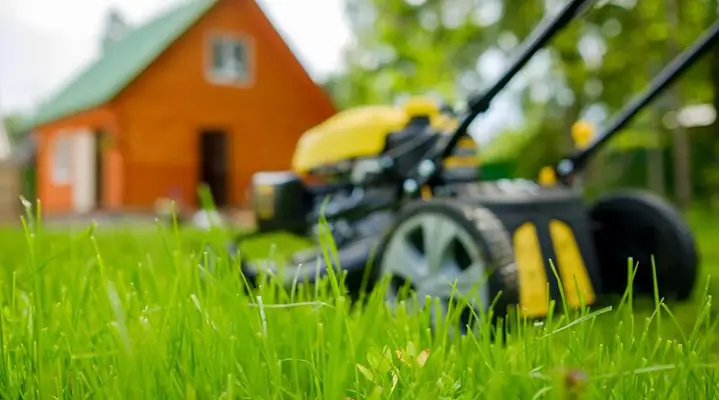
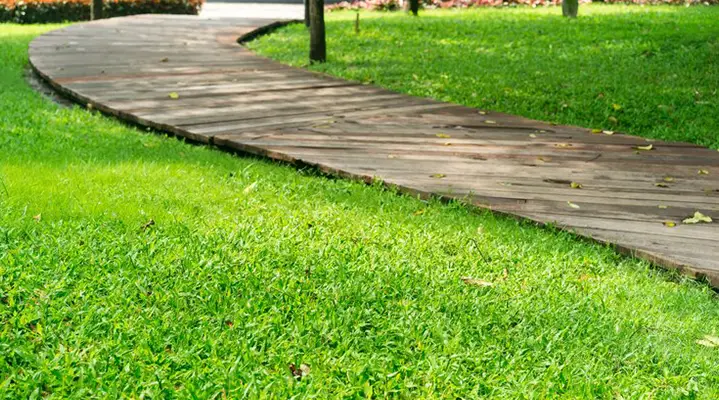
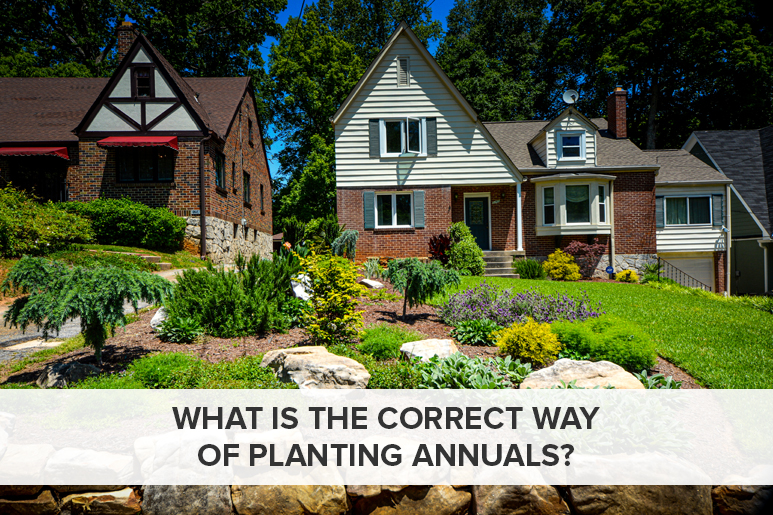 What is the Correct Way of Planting Annuals?
What is the Correct Way of Planting Annuals?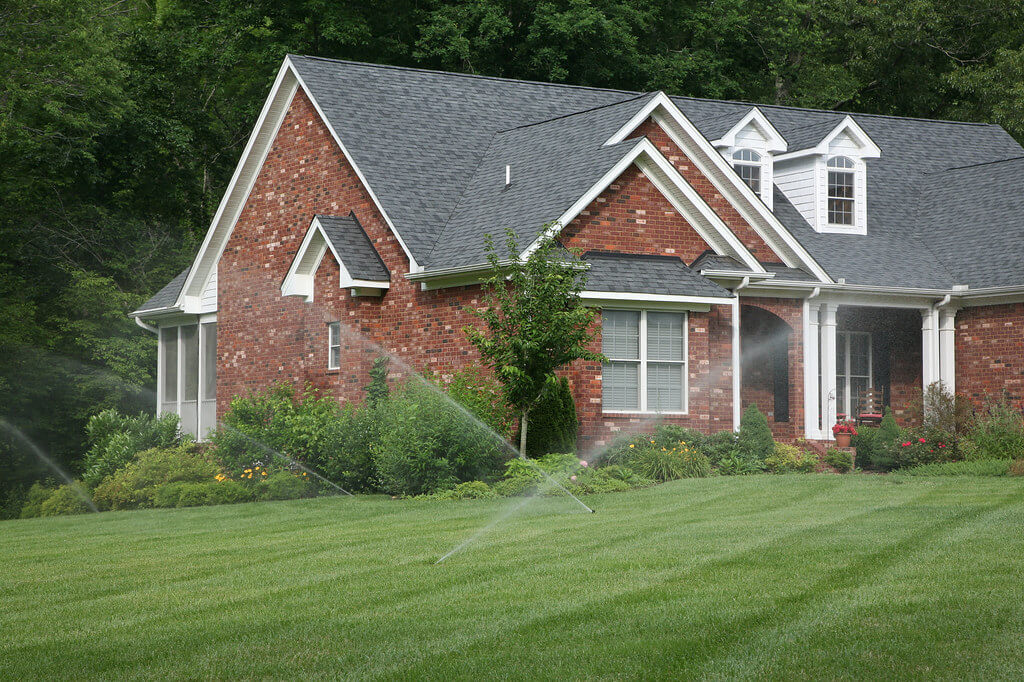 Maintaining Your New Irrigation System
Maintaining Your New Irrigation System Watering Your Landscape the First Year
Watering Your Landscape the First Year
LET'S BE SOCIAL: